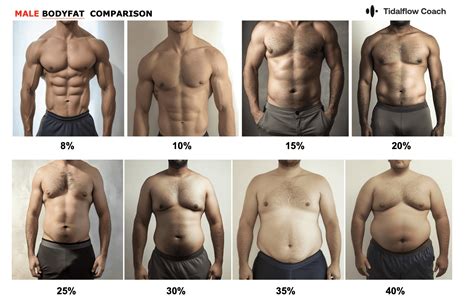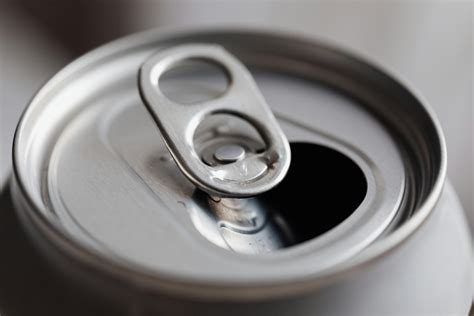Understanding Body Fat and Its Importance
Body fat percentage is a measure of the amount of fat your body holds, relative to your total body weight. It includes both essential body fat and storage body fat. Essential fat is vital for survival, playing a critical role in regulating body temperature, absorbing vitamins, and cushioning organs. Storage fat, on the other hand, accumulates under the skin and around organs, serving as an energy reserve.
Maintaining a healthy body fat percentage is crucial for overall health, as both excessively low and high levels can lead to various health complications. It’s often considered a more accurate indicator of health and fitness than body mass index (BMI), which doesn’t distinguish between muscle and fat mass.

Healthy Body Fat Percentage for Adult Men
For adult men, the average healthy body fat percentage range typically falls between 10% and 20%. However, this range can vary slightly based on age and fitness level:
- Essential Fat: 2-5% (minimum needed for physiological function)
- Athletes: 6-13%
- Fitness: 14-17%
- Acceptable: 18-24%
- Obese: 25% or higher
Men naturally have a lower essential body fat percentage compared to women. Factors like muscle mass, activity level, age, and genetics can influence where an individual falls within this range. A very lean body fat percentage often indicates high muscle mass and low stored fat, common in athletes, while a higher percentage might suggest a greater proportion of stored fat.

Healthy Body Fat Percentage for Adult Women
The healthy body fat percentage range for adult women is generally higher than for men, typically ranging from 20% to 30%. This difference is primarily due to biological necessity, particularly for reproductive functions. The breakdown for women is often:
- Essential Fat: 10-13% (minimum needed for physiological function and reproduction)
- Athletes: 14-20%
- Fitness: 21-24%
- Acceptable: 25-31%
- Obese: 32% or higher
Women require a higher percentage of essential fat to support hormone production, menstruation, and potential childbearing. A body fat percentage below the essential range can lead to hormonal imbalances, loss of menstruation, and fertility issues.

Why Do These Ranges Differ?
The primary reason for the difference in healthy body fat ranges between men and women lies in their fundamental biological and physiological makeup:
- Essential Fat: Women require a significantly higher amount of essential fat to maintain reproductive health. This fat is crucial for the production of estrogen and other hormones, which regulate menstrual cycles and support potential pregnancy.
- Hormonal Differences: Hormones like estrogen in women influence fat storage, particularly in the hips, thighs, and buttocks, which are evolutionary sites for energy reserves for childbearing. Men, with higher testosterone levels, tend to store less fat and build more muscle mass.
- Reproductive Function: A certain level of body fat is necessary for female fertility. Excessively low body fat can disrupt the menstrual cycle (amenorrhea) and impair reproductive function.

Factors Influencing Body Fat Percentage
Beyond biological sex, several other factors contribute to an individual’s body fat percentage:
- Age: Body fat tends to increase with age, as metabolism slows and muscle mass can decrease.
- Genetics: Genetic predisposition can influence how and where fat is stored.
- Diet: Caloric intake and the quality of food consumed directly impact fat accumulation.
- Physical Activity: Regular exercise, especially strength training, helps build muscle mass and reduce body fat.
- Lifestyle: Sleep quality, stress levels, and overall lifestyle choices play a significant role.
Measuring Body Fat Percentage
There are several methods to measure body fat percentage, each with varying degrees of accuracy and cost:
- DEXA Scan (Dual-energy X-ray Absorptiometry): Considered one of the most accurate methods, providing a detailed breakdown of bone, fat, and muscle mass.
- Bioelectrical Impedance Analysis (BIA): Devices send a small electrical current through the body, measuring resistance to estimate body fat.
- Skinfold Calipers: Measures the thickness of fat folds at various points on the body.
- Hydrostatic Weighing (Underwater Weighing): Measures body density by submerging a person in water.
The Health Implications of Unhealthy Levels
Both having too little and too much body fat can have serious health consequences. For men, body fat below 5% and for women below 10-13% can lead to compromised immune function, nutrient deficiencies, hormonal imbalances, and bone density loss. On the other end of the spectrum, body fat percentages exceeding the healthy range are associated with an increased risk of:
- Type 2 Diabetes
- Heart Disease and Stroke
- High Blood Pressure
- Certain Cancers
- Sleep Apnea
- Joint Problems

Conclusion
Understanding the healthy body fat percentage ranges for adult men and women is essential for assessing overall health and setting realistic fitness goals. While men typically aim for 10-20%, women’s healthy range is higher at 20-30% due to crucial biological differences related to essential fat and reproductive health. Rather than focusing solely on weight, considering body fat percentage offers a more comprehensive view of body composition and its impact on long-term well-being. Consulting with a healthcare professional or a certified fitness expert can help determine an individual’s ideal range and guide them towards healthy lifestyle choices.




